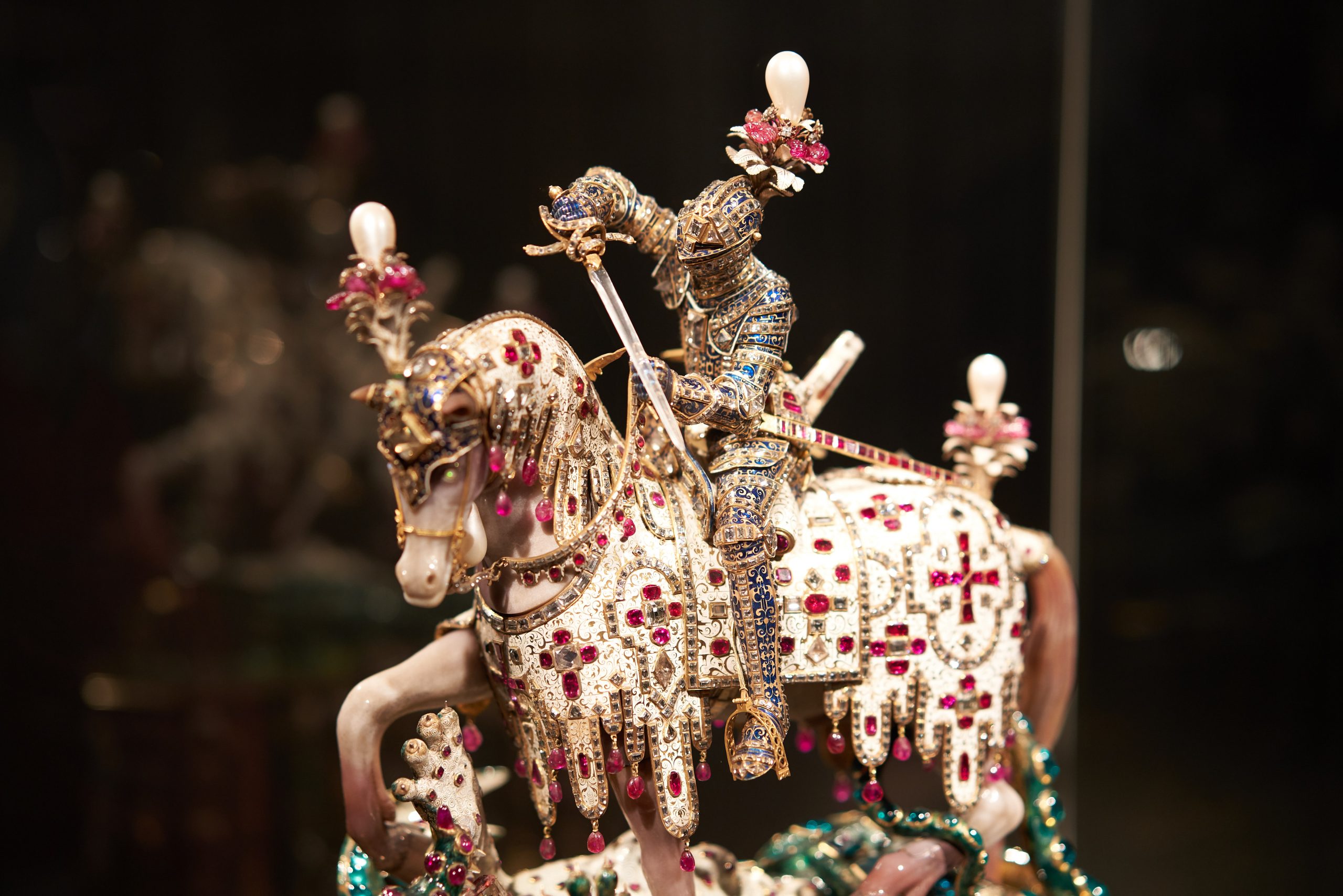
The Residence
Majestic halls and royal treasury
The Palace of the Duke and Kings of the House of Wittelsbach provides an insight into Bavaria’s royal past. Huge audience halls, cabinets and galleries as well as several throne rooms display overwhelmingly precious ornamentation and furniture in a variety of styles from Renaissance to Classicism. You will get acquainted not only with art and craftsmanship but also with interesting information on the former royal family that uncovers joints and connections within European history and allows for a glimpse behind pure historical facts. Special attention will be paid to the long lasting and difficult efforts to reconstruct the palace in its former splendour after its complete destruction during World War II.

Nymphenburg Castle
A splendid gift
When in 1663 Bavaria’s electress gave birth to an heir, her husband presented her with an absolutely unique and precious gift: a baroque castle outside Munich. Huge parks were laid out and hundreds of servants saw to the needs of the elector’s family. For over over two centuries Nymphenburg Castle was the Wittelsbachs’ main summer palace. Up to the present day its splendour mirrors the far-reaching political ambitions of Bavaria’s elector in those days. The tour will make you familar with Bavaria’s baroque art and lifestyle and its political destiny from the 17th to the 19th century.

Schleißheim Castle
Baroque joy of life
Munich is surrounded by a number of summer palaces. Three centuries ago a most scenic place north of the city was changed into a unique garden arrangement with overwhelmingly beautiful baroque castles: Schleißheim. A short ride takes you out to Schleißheim, where Duke Maximilian II Emanuel, a relative to Louis XIV of France and admirer of the lifestyle at Versaille, used to host some of his most luxurious feasts. Your visit will include the main Palace of Schleißheim with its splendid rooms and its famous gallery of baroque paintings but also the small Palace of Lustheim in the gardens nearby, that offers one of the richest collections of porcelain from Meißen.

Treasury Museum of the Residence
Glittering diamonds of the Royal Crown Jewelery
One of Germany’s richest collections of jewels, Munich’s Treasury Museum displays gold work from the Middle Ages to the period of Classicism. The best pieces were crafted in the 16th century, when Bavaria’s Dukes ranked among Europe’s most important and influential leaders. Precious works made of ivory, gems or mountain crystal surround the Bavarian Crown Insignia and the precious statuette of St George the Knight. The Treasury museum is located in the Residence and can thus be included in a guided tour of the main palace.
